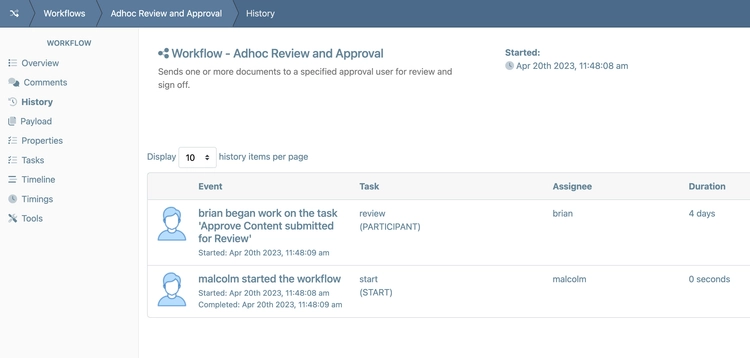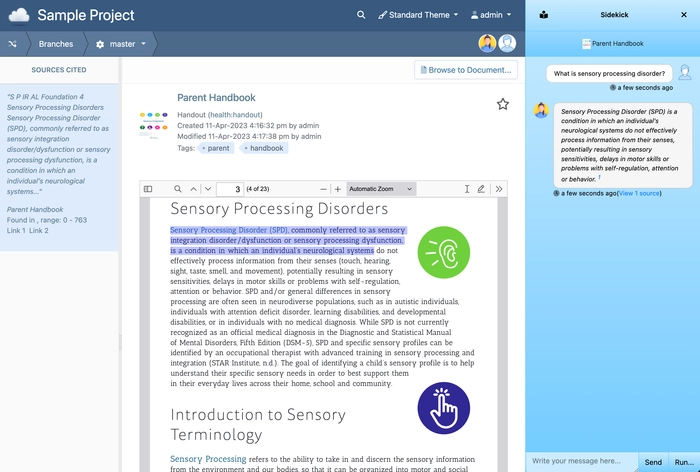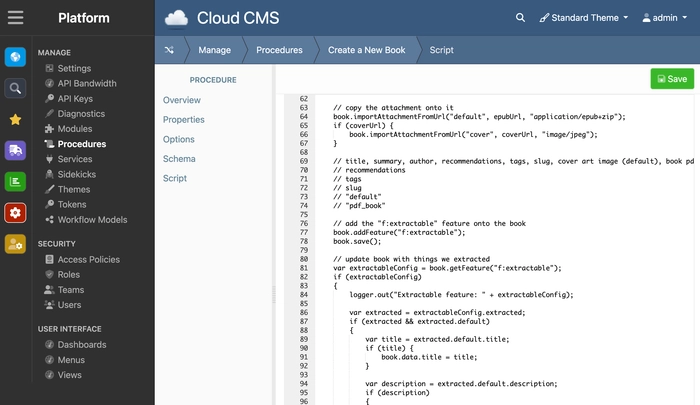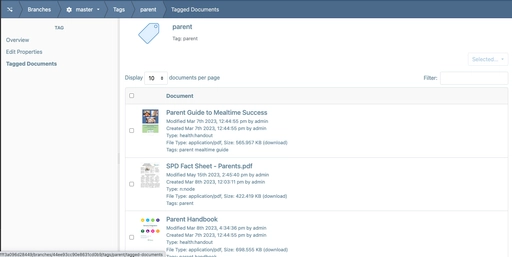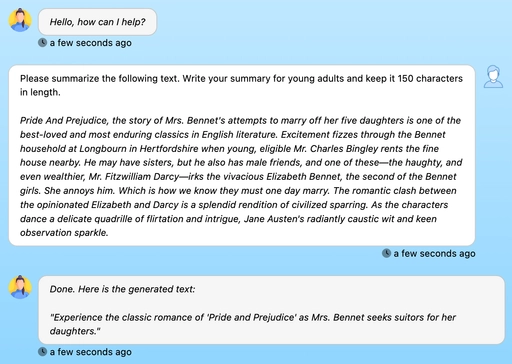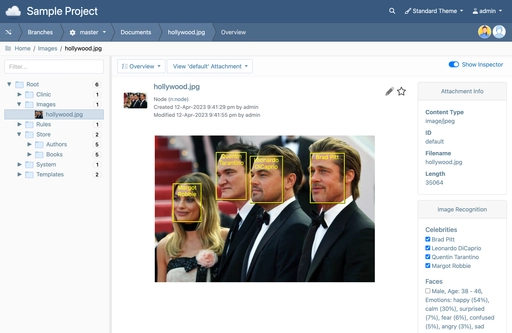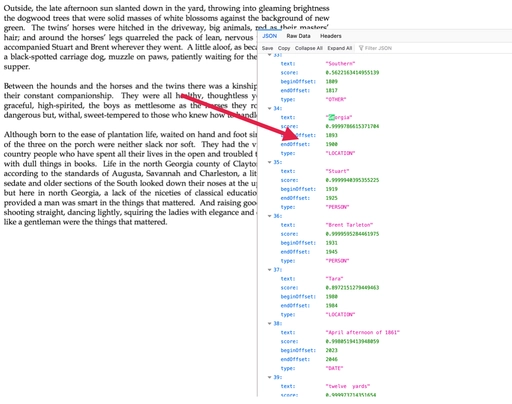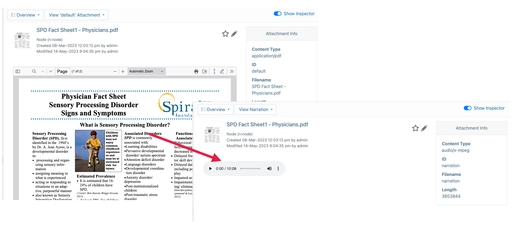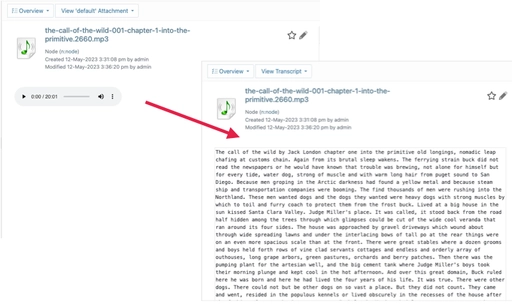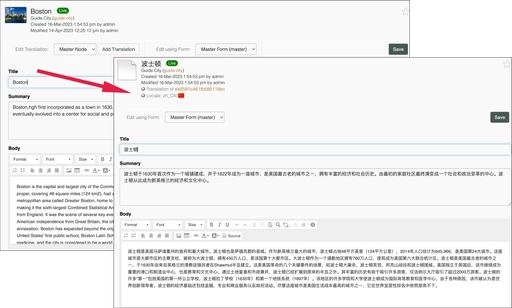Automation
Automate your content production workflows to increase efficiency and reduce redundant, manual tasks.
Focus on what matters most -- your customers.
Key Features
-
Content Workflow
Ensure that content is accurate while ensuring compliance with regulatory requirements and enterprise policies.
-
Automate rules and actions
Lifecycle policies trigger your custom logic to fire off web hooks, run server-side scripts and ensure data consistency as editors work on content, branches, pull requests and more.
-
Intelligent Services
Enhance your content with integrated AI services for Taxonomies, Classification, Tagging, Image Recognition, Translation, Text Analysis, Optical Character Recognition (OCR) and more.
Workflow
Optimize the flow of collaboration and contribution among teams using enterprise-grade, business process management (BPM).
-
Models
JSON-based BPM models let you define complex flows with multiple stages, complex multi-document routing and strict adherence to access policies and roles.
-
Collaboration
Tasks are created and assigned to users and groups (pooled tasks), automatically tracking due dates, progress and raising awareness of bottlenecks. Users claim and delegate tasks to work efficiently.
-
Decision Logic / Handlers
Workflows execute decision logic, routing documents based on in-flight calculations. Handlers are triggered as documents transition between workflow states to execute HTTP web hooks, Email and Slack notifications, generative AI functions and more.
Integrated AI tools to assist the editor
Automated assistants (Sidekicks) free up your team to be more efficient and more creative.
-
Automated Workloads
Sidekicks provide assistance at performing a lot of the repetitive tasks and heavy lifting. Once assigned a task, they perform the work in isolated branches and then present that work to you for further editing and approval.
-
Conversational Insights (with Citations)
Converse with your sidekicks about the content that you're working on. Ask questions and glean insights on specific content instances, sets of content, folders or even your entire branch of content. Sidekick provides citations to indicate from where within your content the answer was sourced.
-
Content Generation
Sidekicks utilize AI, including Generative AI and ChatGPT, to generate new and interesting content based on what you provide. They summarize documents, generate questions and answers, produce key insights, extract terms and bullet points and much more.
Procedures
Develop parameterized stored procedures using server-side JavaScript and JSON Schema. Procedures provide scriptable implementations of complex, multi-step worker tasks that can be executed by editorial users or automated Sidekick assistants.
-
Scriptable Procedures
Develop your own scriptable procedures using server-side JavaScript and JSON schema to describe entry forms that your team can use to kick off automated work and productivity!
-
Sidekick Assistants
Using procedures, Sidekick Assistants can work alongside your editorial team to handle a lot of the grunt work, including using generative AI to write the initial cut of multi-document, branch-staged deliverables.
-
Orchestration
Procedures allow your editorial team to orchestrate Sidekick assistants to perform work on their behalf, empowering your team to cherry-pick from the best contributions to merge and approve AI generated work into final deliverables.
Boost your Content with Integrated AI Services
Model your content to integrate seamlessly with backend AI services that automatically populate and maintain metadata about your content.
Classification
Automatic assignment of content to taxonomy classifiers as your content is modified and undergoes analysis and extraction by AI services including text analysis, image recognition, optical character recognition and more. Define your taxonomy hierarchy and auto-sync assignments as detection occurs in the background.
-
Taxonomy
Support for multiple versioned taxonomy hierarchies. Develop hierarchies and apply them to multiple projects, repositories and branches.
-
Classification
Support for nested classifiers with inheritance and behaviors. Easily tag content with classifiers using drag and drop via the taxonomy tree.
-
Import
Import Taxonomy Hierarchies for various industries (including Medical, Pharmaceutical, Automotive and more) into your data engine using one of our pre-built import providers.
Generative AI
Generate new content, summaries and insights using GPT-3 and GPT-4 powered models by OpenAI ChatGPT, Google Bard and other Generative AI backend providers.
-
Write new content
Automatically write new content based on an existing selection of text, sizing it for a specific number of words or length and targeting it to a specific audience and voice (such as "professionals" or "parents").
-
Insights
Given a selection of content, automatically generate summaries, keywords, key points, questions and answers, bullet lists of topics and more. Derive the theme of selected material and correlate with other documents in your branch.
-
Converse with your Content
Generative AI capabilities work with your content to source insights and write against the knowledge and structure contained in your content model. All interactions are scoped to your current branch, your current document or a current selection of multiple documents. Chat history is maintained to allow for natural language interaction.
Image Recognition
Automatically identify faces, landmarks, text terms and labels, sentiment and content moderation concerns within your image content. Your content is immediately indexed for full-text search and structured query, letting you utilize these extract elements for quick content lookup and discovery.
-
Recognition
Define which content types are automatically processed through image recognition. Extracted elements are stored as JSON on your content, letting you get at the data from within your application or user interface.
-
Visual Identification
Extracted elements are highlighted within the editorial interface using overlays. These visual overlays serve to quickly identify the location and relevancy of tags and labels as they apply to bounded regions of the image.
-
Classification
Image Recognition hooks into the Classification engine, allowing for extracted labels and tags to be utilized in computing the taxonomy of the content bearing the image.
Optical Character Recognition
Automatic detection and extraction of text, terms and categories from images, scanned and hand-written documents. Drop content into Gitana from a scanner or email integration to automatically extract text and index documents for full-text search.
-
Text Extraction
Hand-written and scanned elements are submitted for visual analysis and text extraction, pulling out all textual elements for use by the editorial curation team.
-
Full-Text Search
All extracted text is immediately indexed for full-text search, letting editors and managers (and your own live applications) instantly search and find documents.
-
Document Behavior
Wire up rules that automatically execute based on extracted content, including approval workflows, web hooks and data sanitizing server-side scripts!
Text Analysis
Automatic analysis of text from content properties and attachments to detect labels, landmarks and other entities. Provides determination of sentiment and detection of moderation concerns (bad language, sexual content and more).
-
Text Analysis
Text is extracted from your content, including properties and attachments. For any new or updated text, analysis is performed and the results are applied to the JSON of your document, enabling immediate indexing and availability for full-text search, query, GraphQL and traversal.
-
AI Services
Plug in to pre-built integrations to AWS Comprehend and OpenAI GPT-powered NLP comprehension.
-
Classification
Image Recognition hooks into the Classification engine, allowing for extracted labels and tags to be utilized in computing the taxonomy of the content bearing the image.
Text to Speech
Generate high quality audio with voice sampling from text attachments, properties or ad-hoc fragments of text.
-
Speech Generation
Produce high quality voice renditions of textual elements. Configure each generative call to utilize the configuration options and vocal samples for the selected platform.
-
AI Services
Plug in to pre-built integrations to AWS Polly, Google Text-to-Speech Services and Azure Text-to-Speech Services.
-
Workflow-based Approval
Route audio renditions and source text through workflow for review and approval prior to deployment to a live web site, endpoint or indexing engine.
Transcription
Automatic processing of audio streams into text-based representations. As you make changes to your audio files, transcriptions are automatically updated and kept in sync.
-
Audio Formats
Support for a diversity of audio formats. Audio is processed on the fly and text transcriptions are produced and applied to your content instance as JSON.
-
AI Services
Plug in to pre-built integrations to AWS Transcribe, Microsoft Azure Transcription Services and the OpenAI Whisper API.
-
Workflow-based Approval
Route transcriptions and source documents through workflow for review and approval prior to deployment to a live web site, endpoint or indexing engine.
Translations
Automatically internationalization (I18N) of documents via AI-assisted generation of translations into one or more target locales. As you make changes to your master document, the translations are automatically kept in sync.
-
Master Document
Well-suited for use-cases in the European Union, Canada and other regulatory environments where multiple documents (including translations) must move together through a workflow approval process.
-
Natural Language Processing
Plug in to pre-built integrations to AWS Translation Services, Google Translation Services, Microsoft Azure Translation Services and OpenAI GPT-powered Translation Services.
-
Workflow-based Approval
Route translations and master document changes through workflow for review and approval prior to deployment to a live web site, endpoint or indexing engine.
Ready to Get Started?
Unlock your data with smart content services and real-time deployment

